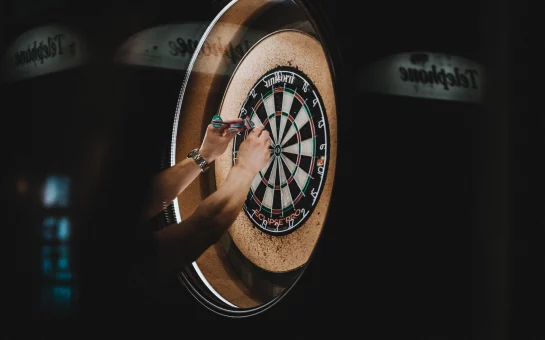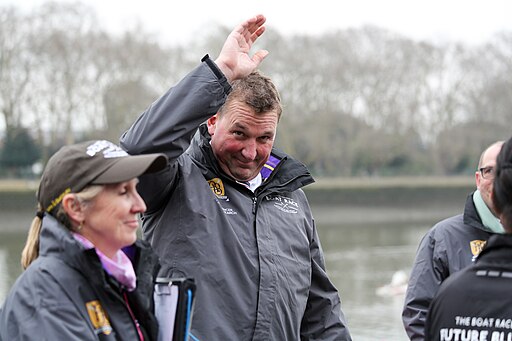With temperatures dipping below -5°C across the North West already this month, a hardy bunch of footballers, athletes and members of the public have been exposing themselves to extreme colds of up to -150°C in an effort to improve performance and recovery.
Whole body cryotherapy (WBC) is one of the latest sports recovery solutions sweeping across the nation. First developed in the 1970s, WBC has only recently started to become commercially available through the development and refinement of cryotherapy chambers.
Patients enter a cryotherapy chamber wearing only their underwear, crop tops for women, socks, rubber shoes, ear muffs, gloves and facial protection before being subjected to temperatures between -120°C and -150°C for up to three minutes.
Liquid nitrogen vapour is released inside the chamber to provide constant sub-zero submersion to evoke physiological reactions that prompt the healing and recovery of the body.
At this moment, Premier League clubs Manchester City, Watford and Leicester each have their own cryotherapy chambers installed at their training facilities as an extreme alternative to the more commonly used ice bath treatment, in order to maximise recovery performance.
Future Therapies are a cryotherapy treatment venture based in Leeds that recently opened a facility in Manchester at the Ainscow Hotel earlier this year.
The company offers a range of cryotherapy treatments ranging from whole body cryotherapy chambers to localised cryotherapy and EECP (Enhanced External Counterpulsation Therapy).
Find out why @JordanSpieth utilizes #cryotherapy #PoweredByImpact: https://t.co/BX32vWbHNP pic.twitter.com/LFONgZCRGY
— Impact Cryotherapy (@impactcryo) December 10, 2017
Matthew Bailey is a sports science expert in cryotherapy who works for Future Therapies. After working as a physio, he turned to cryotherapy as a more effective method of treating his patients.
“Our country has been looking over the fence for a while. In Poland their version of the NHS uses localised cryotherapy treatment to treat people,” said Bailey.
“Cryotherapy is going to be a part of your gym session through the week or your training programme in the future.
“I believe that cryotherapy is the modern-day ice bath. The longer it is around, the more studies we can do, and we can find a lot more benefits with it.”
While some high-performance athletes such as the Man City squad are frequent users of WBC, there is a growing surge in the number of people keen to try out the treatment for themselves.
“A lot of people are now using this for pre-training because it promotes blood flow around your body by making your body want to warm up to make you alert,” said Bailey.
#TBT @J_Warrington – 06.05.17 – having pre-fight #Cryotherapy treatments with Sara Turner. #ice #boxing #prefight #leedslad #MOT #lufc #CryoChamber #EECP #Leeds #Manchester #CryotherapyUK #FutureTherapiesLTD #TeamTurner pic.twitter.com/VuPzcSQI4c
— Future Therapies (@FutureTherapies) December 14, 2017
“We have had the whole spectrum come in from some people who don’t do much exercise, to marathon runners, boxers, mixed martial artists, runners, cyclists and even para-troopers.
“We have had some footballers come in because they don’t have access to it at their clubs.
“A few boxers have used the chamber for when they do morning and afternoon training sessions. They train in the morning, have the treatment and then they can do their next session. They are almost cheating.”
RISK ELEMENT
Despite the proposed benefits, there remains an element of caution around using the chambers according to the English Institute of Sport (EIS).
The EIS are the team behind many of Great Britain’s most successful sports. The organisation worked with 93% of competing athletes and 31 of the 34 sports that won a medal for Team GB and Paralympics GB at the Rio 2016 Olympic & Paralympic Games.
Dr Jonathan Leeder is a Performance Lead at the EIS who specialises in recovery strategies and physiology. He has stressed that due to the lack of current research there remains a risk with whole body cryotherapy.
“Currently at the EIS with athletes, we do not use cryotherapy a great deal. The reason for that is the evidence for it is very mixed,” said Dr Leeder.
“There is a risk element to be considered which should be factored into your decision making as to whether you use it or not.
“Some people are still wary of cryotherapy chambers because it is extreme cold. So, are the potential risks and side-effects known enough to be endorsing this across the board for recreational and elite athletes?”
The current financial cost of whole body cryotherapy chambers and sessions are also a significant factor as to why Dr Leeder has not personally endorsed any Olympic sport athlete to use the recovery strategy.
“There are many other strategies available which have got more evidence, so you are more confident that they are going to work and that they are more logistically convenient and at a fraction of the price.
“This doesn’t mean that it doesn’t work, it just means there is insufficient evidence currently.
“However, some sports are likely to be trialling chambers to see if there is a benefit for their athletes before they commit to buying one.”
.@uk_sport chair Dame Katherine Grainger visited @gbboxing ‘s world class performance programme…and she was impressed by what she saw!
Watch the video with interviews from EIS practitioners, PD Rob McCracken and @BigFrazeBoxer
https://t.co/G57jHiku5a pic.twitter.com/0ZPWbOGrxZ
— EIS (@eis2win) December 19, 2017
While cryotherapy chambers continue to grow in popularity amongst football clubs such as Man City, other sporting organisations such as the EIS cannot afford to take risks without a large database of strong scientific evidence.
“The big difference between professional sports like football and rugby compared to Olympic sports is the budgets.
“Football clubs have the money to buy the chambers and the implications are that if it doesn’t work out for them, there isn’t as significant a financial loss.
“In Olympic sport we just do not have the budget to buy something like that and risk it not being effective.”
Dr Leeder added that it took over 20 years for ice bath data to be correlated before the recovery strategy became commonplace amongst elite athletes programmes today.
Although cryotherapy chambers are currently still a relatively unknown phenomenon in Britain, in 20 years’ time the rationale of exposing yourself to temperatures as low as -150°C could become a part of the daily routine for every recovery session across the country.
For more information on the range of cryotherapy treatments available at Future Therapies click here.
Image courtesy of CRYO via YouTube, with thanks.



